**WARNING** If you are looking for pictures of a beautiful, famous, or ďmust-playĒ golf course, this may not be what you want. This golf course is a municipal course in Oakland, California. I am posting this because a forum member asked me to last week (and itís a good exercise for me). It might be interesting to discuss the addition of bunkers on certain holes, or other possible changes that could improve the strategic aspects of the course. Iíd be happy to take any suggestions on the format, commentary, and photography (very basic) in this post as this is my first course review, as well as answer any questions about the course itself. Also, Iíd strongly advise against playing this course in the winter, it doesnít drainÖ
Please let me know if you do or donít enjoy this post.
Course Info:
The course was built in 1923, however I have not found any information on the design of the golf course. Apparently there was no architect, and I canít find any history on its development and evolution.
Length: 6004 yards
Par: 72
The course plays longer due to the elevation changes and mostly uphill approaches.
Youíll see the course is extremely hilly (the most elevation changes Iíve seen). The first 6 holes basically go from one side of a huge valley to the other, making the course very strenuous to walk. There are only five bunkers on the entire course. The addition of a few strategic bunkers could add greatly to the thought required to play many of the holes. For most, the only question off most tees is ďcan I hit my driver straight enough?Ē
1st hole: 374 yards, par 4
This hole plays as the #1 handicap hole, likely due to the driving range on the right that eats up the weaker golferís slice. However, there is plenty of room, since a ball hit at the hill on the left will bounce into the fairway. The drive plays to a plateau, which falls off away from the golfer into a valley about 250 yards from the tee. The stronger golfer can choose a 130-yard shot from a level lie, or a pitch from well below the hole to the elevated green. The green is similar to most on the course: round and sloping back-to-front. The overuse of in-course OB starts behind and right of the first hole. Why they built those 3-foot OB fences around many of the greens beats me. At least give the golfer a chance at finding and playing his ball!
A view from the first tee:
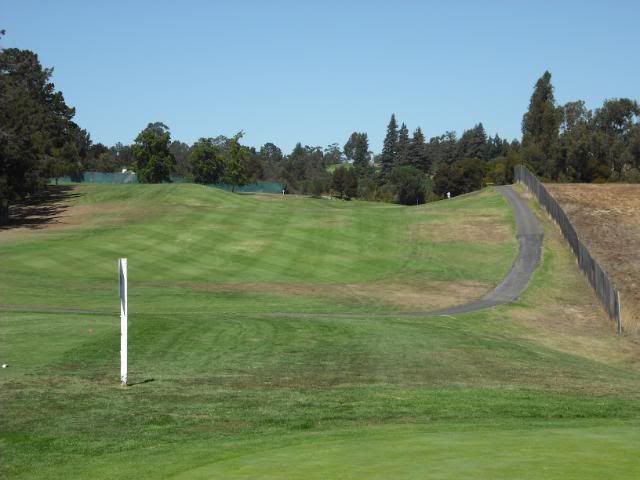
A look at the green from the mound on the left side of the fairway. The OB behind and right of this green is completely unnecessary:
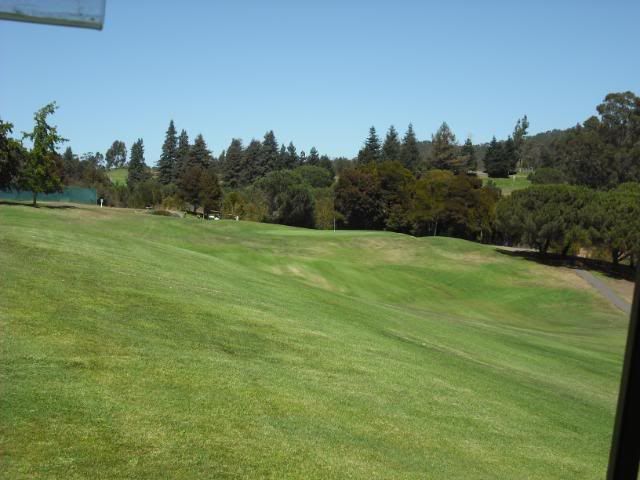
2nd hole: 151 yards, par 3
Not much to say about this hole. Itís uphill with a relatively flat green, with one of the six bunkers on the course left of the green. This picture was taken from across the valley on the 9th tee:
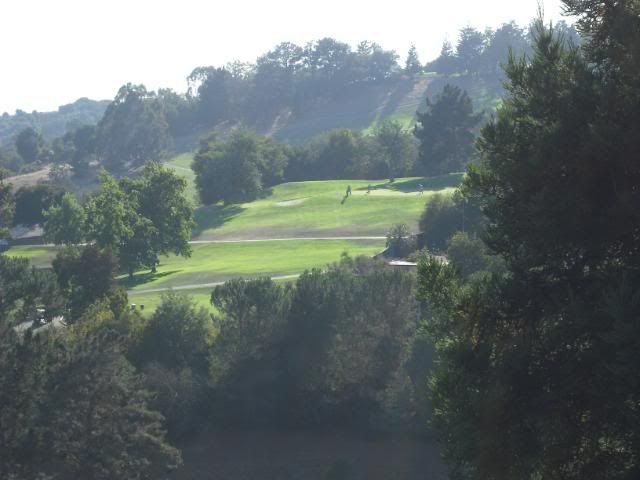
3rd hole: 464 yards, par 5
This hole is the first of three par 5ís on the front nine (there are none on the back due to the par 6 18th), and the shortest. The tee shot is severely downhill between two fairway bunkers. This seems to be an attempt to defend the short par 5 from longer hitters, but having them directly across from one another seems artificial to me. The green is tucked behind the trees on the right, so the preferred drive is to the left side. This green is the first to feature a severe upslope behind the green, which we will see often throughout the rest of the course:

4th hole: 486 yards, par 5
#4 turns back around and pretty much plays #3 backwards. Most of the landing area is blind (this picture is taken from the forward tees), but the fairway is quite wide. Thatís not a cart path that crosses the fairway, itís the entrance road. It crosses holes 2, 3, 4, 5, and 11, making the drive to the clubhouse as exciting as the course itself.
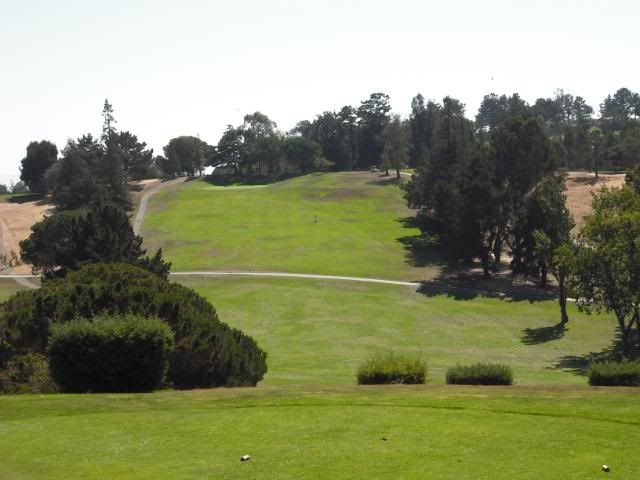
If you donít go at the green in two, youíve got a completely blind shot at the green:
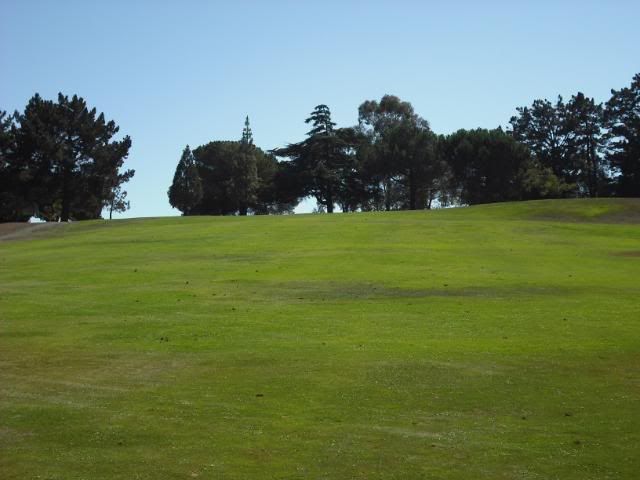
The back two-thirds of this green are so severely sloped back-to-front that a putt from the back fringe will not stop for 30 feet (over half the depth of the green). Even a few uphill puts trickle back a bit after they stop. Over the green is simply dead, youíll be lucky to keep the ball on the green. The severity of a couple of the greens and downslopes around them, while sometimes extreme, do add some interest to almost exclusively bunkerless green complexes. The slopes arenít easy to see, so I havenít provided many close-ups of the greens themselves. However as I write this I can see that more views of the terrain around the greens would have been helpful.
5th hole: 385 yards, par 4
The 5th plays back to the bottom of the valley. The landing area is about 120 yards wide.. A play down the right side, however, leaves a tough approach over the next tee box to a green that slopes away from the player.
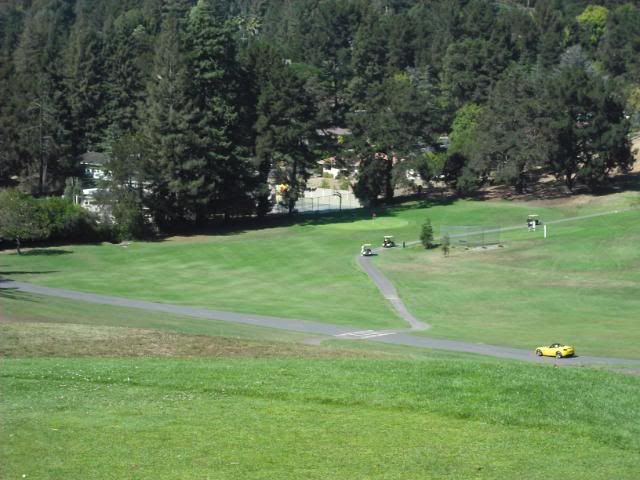
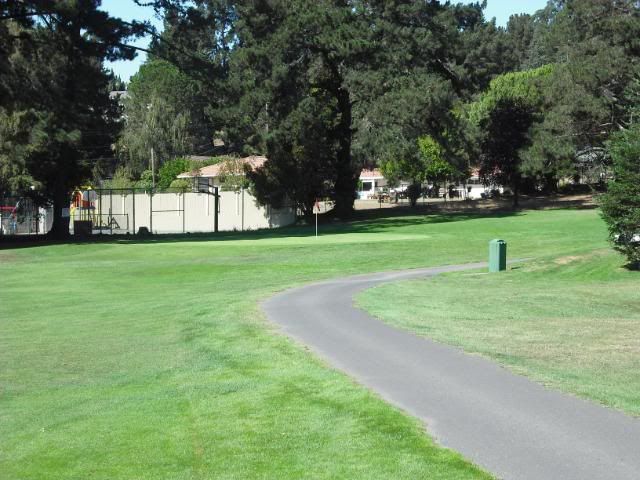
6th hole: 313 yards, par 4
This hole plays nearly as long as #5, going straight up a gully. Balls to either side will bounce back to the fairway, but will hold on the slope, creating difficult stances. The better player, however, may want to use this to his advantage. The green is elevated but flat, making a longer approach difficult to hold. A view of the approach:
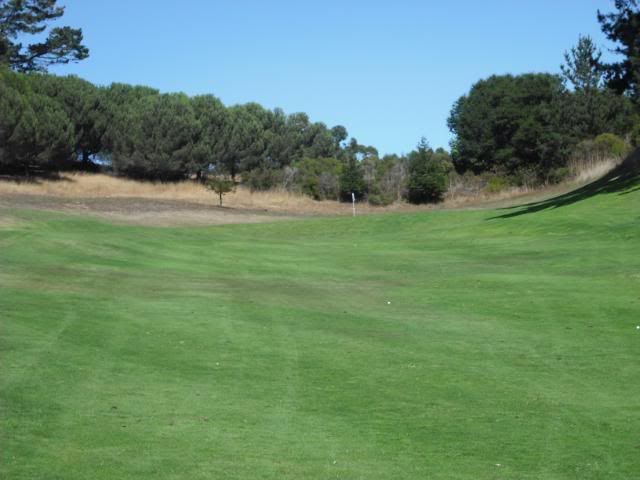
7th hole: 188 yards, par 3
For a relatively short course, this long, uphill par 3 to a small, blind green is definitely a tough one. Iíve ever seen this green hit in regulation in about 20 rounds played. OB long and left makes most golfers lay off to the right and try to get up and down. The blue flag is off to the left in this picture.

The problem is, the green is steeply sloped from back to front. On this dayís pin location, any chip short of the hole will roll back to 15 feet away. Anything above the hole is in danger of going down the hill on the next shot. On my first round of the weekend, I chipped to about eight feet (hole high), and proceeded to putt the ball down the hill on my way to a 3-putt.
8th hole: 492 yards, par 5
A blind tee shot leaves the player looking at an awkward slope, unsure of where to aim. The best drive is just left of the middle cart path (why on earth do they need three of them?).
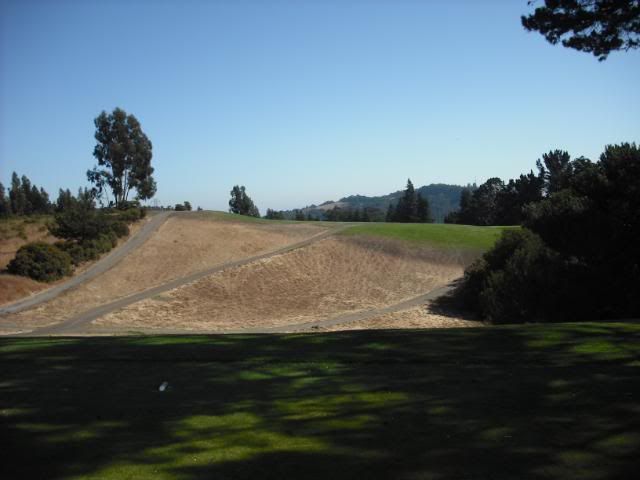
If the drive catches the slope, longer hitters will have a mid to short iron approach for their second shot. The only danger on this hole is OB left and far right. A view from the green:
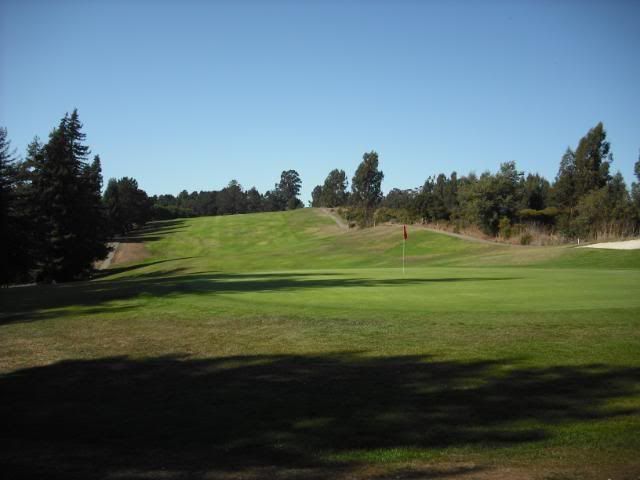
9th hole: 182 yards, par 3
This hole goes from one of the higher points on the course to one of the lowest, all in 182 yards. From the tee, the player canít see any of the green, with only a white pole and trees behind to aim at. Taking a picture of this hole was difficult.
From the forward tees:
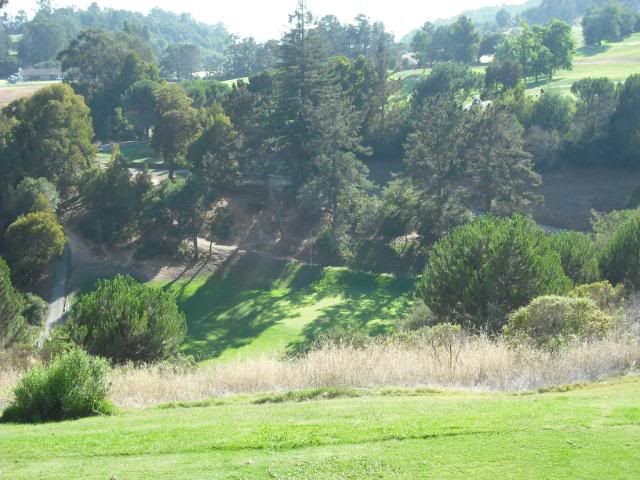
From the back tees:
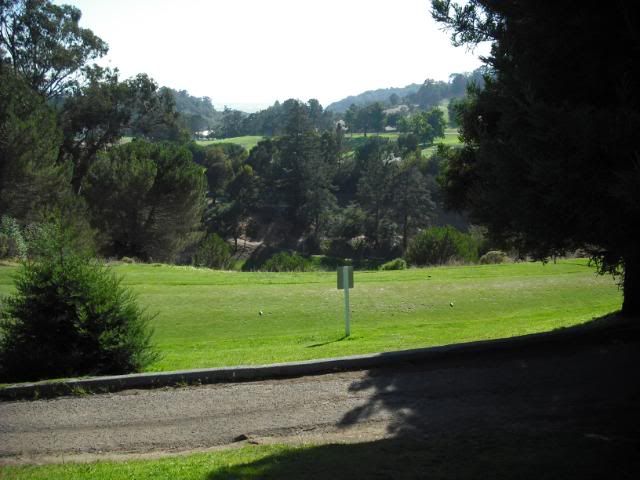
10th hole: 305 yards, par 4
The back nine begins with a short par 4 that plays up a gully. The fairway is only about 15 yards wide in the landing area, but is one of the easiest to hit since a drive to either side feeds down to the bottom of the gully. The green is larger than most, but missing long or right leaves a very difficult downhill chip. However, most strong golfers will find this to be a very easy drive-and-pitch hole. The approach:
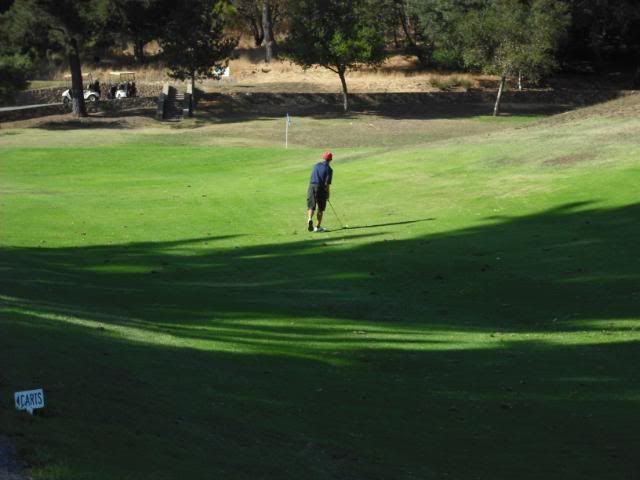
11th hole: 420 yards, par 4
This is the only par 4 on the course that plays over 380 yards, and itís a pretty big one. The drive is well elevated, but the approach is straight uphill, more than it appears in this picture.
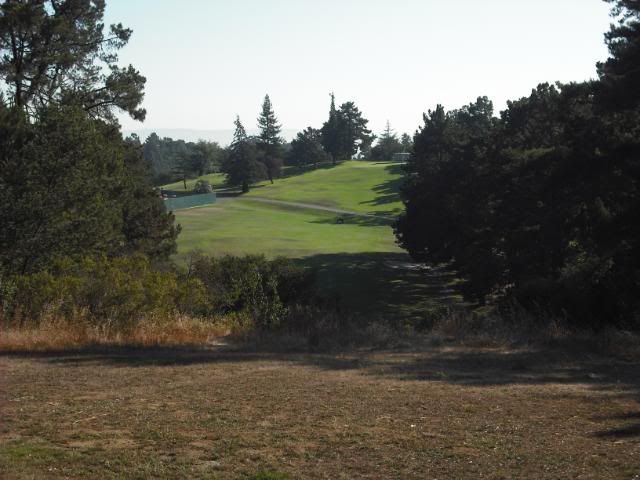
12th hole: 156 yards, par 3
Pretty straightforward. The tee shot is a bit awkward due to trees by the tee. I canít understand why they have made the forest on the left OB, itís clearly on the property. It seems that anywhere a ball may be lost, they decide to settle the matter themselvesÖ
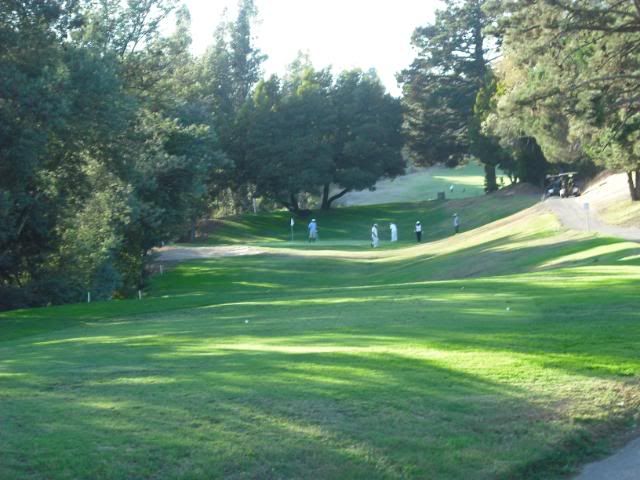
13th hole: 287 yards, par 4
Another short par 4 playing uphill. The landing area is very wide, and the only challenge is a back-left pin location. As long as the player is below the hole, it should be an easy par or birdie.
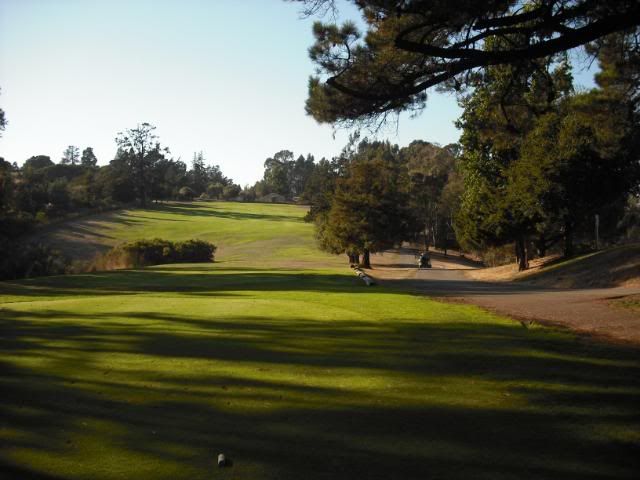
14th hole: 369 yards, par 4
After a blind tee shot, the golfer is left with a very flat view on the approach. Not much to say about this one:
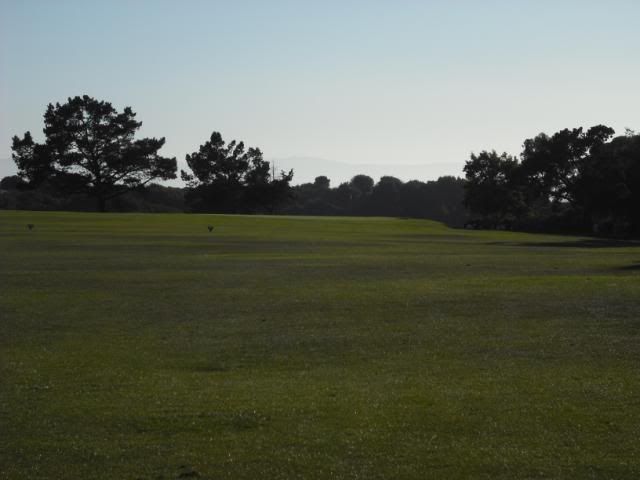
15th hole: 259 yards, par 4
The shortest par 4 on the course is rather dull. The only thing to prevent players from going for the green is OB on both sides, which I canít say add anything to the hole.
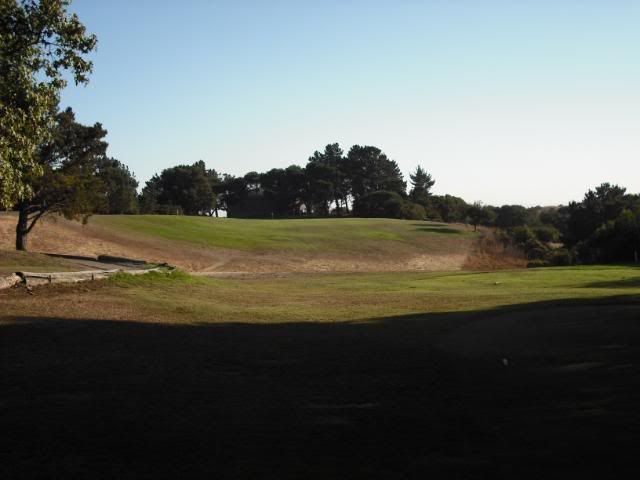
16th hole: 306 yards, par 4
In my opinion the most interesting par 4 on the course, this hole was discussed recently in another thread. You can barely see the flagstick under the tree on the left (past the cart path). To drive the green, the strong player must challenge the trees on the left side, possibly even bouncing the ball between them. Anything right of the green will trickle back down the hill, leaving another blind approach. The shorter hitter can play safely off the hill on the left. The back right quarter of the green wonít hold any shot (I putted off the green my first round of the weekend).
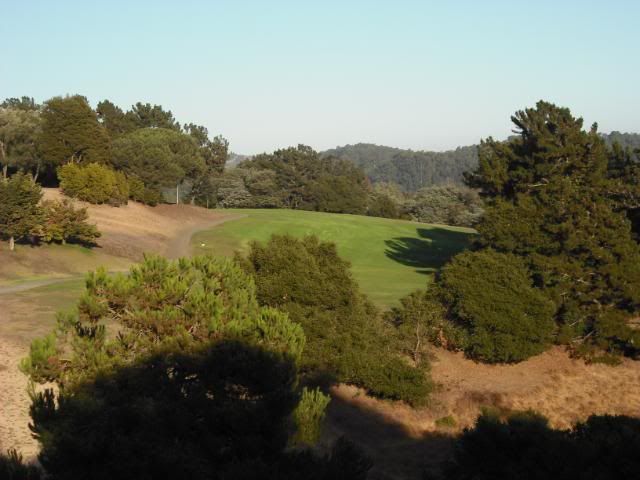
17th hole: 194 yards, par 4
This is the back nineís version of the 7th hole, but it plays longer and is often into the wind. The dirt slope on the left often carries balls to the (again unnecessary) OB. Not a great view from the tee:
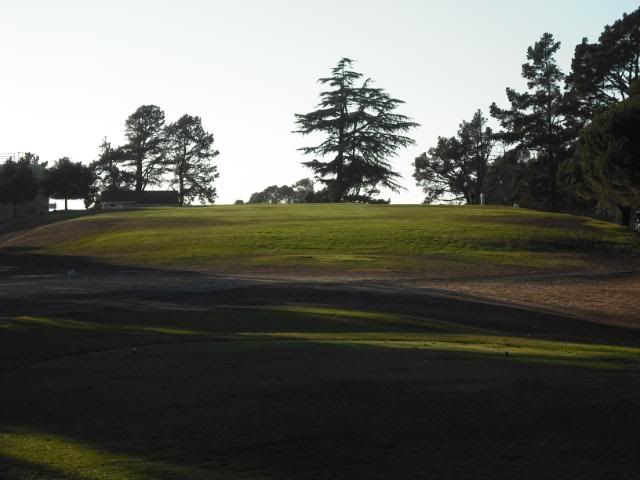
18th hole: 673 yards, par 6
Well, here it is. This hole is definitely short enough to be a par 5, Iíve seen players hole high in two. A plaque on the tee commemorates a greenskeeper in 1929 who one the US amateur long drive contest here with an average drive of 427 yards! Iím sure the fairway was firmer back then, though. An interesting occurrence is the possibility of a downhill lie to an elevated greenÖ
The stronger players can get the ball over the ridge to a somewhat level spot in the fairway:
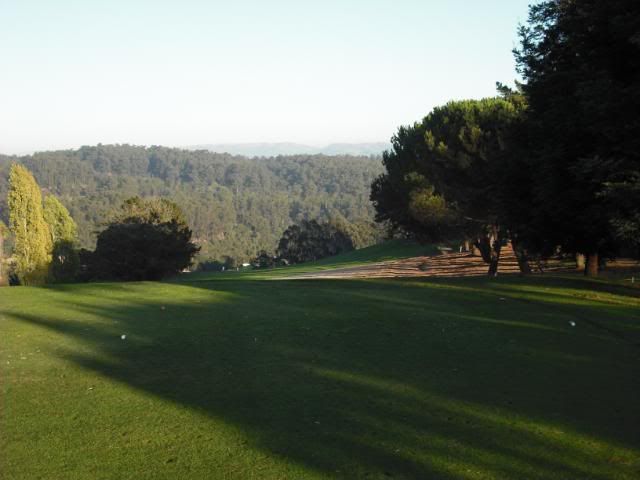

The fairway is so steep that the cart path has switchbacks!

I hope at least a few of you enjoyed these pictures, and again, any criticism would be appreciated.